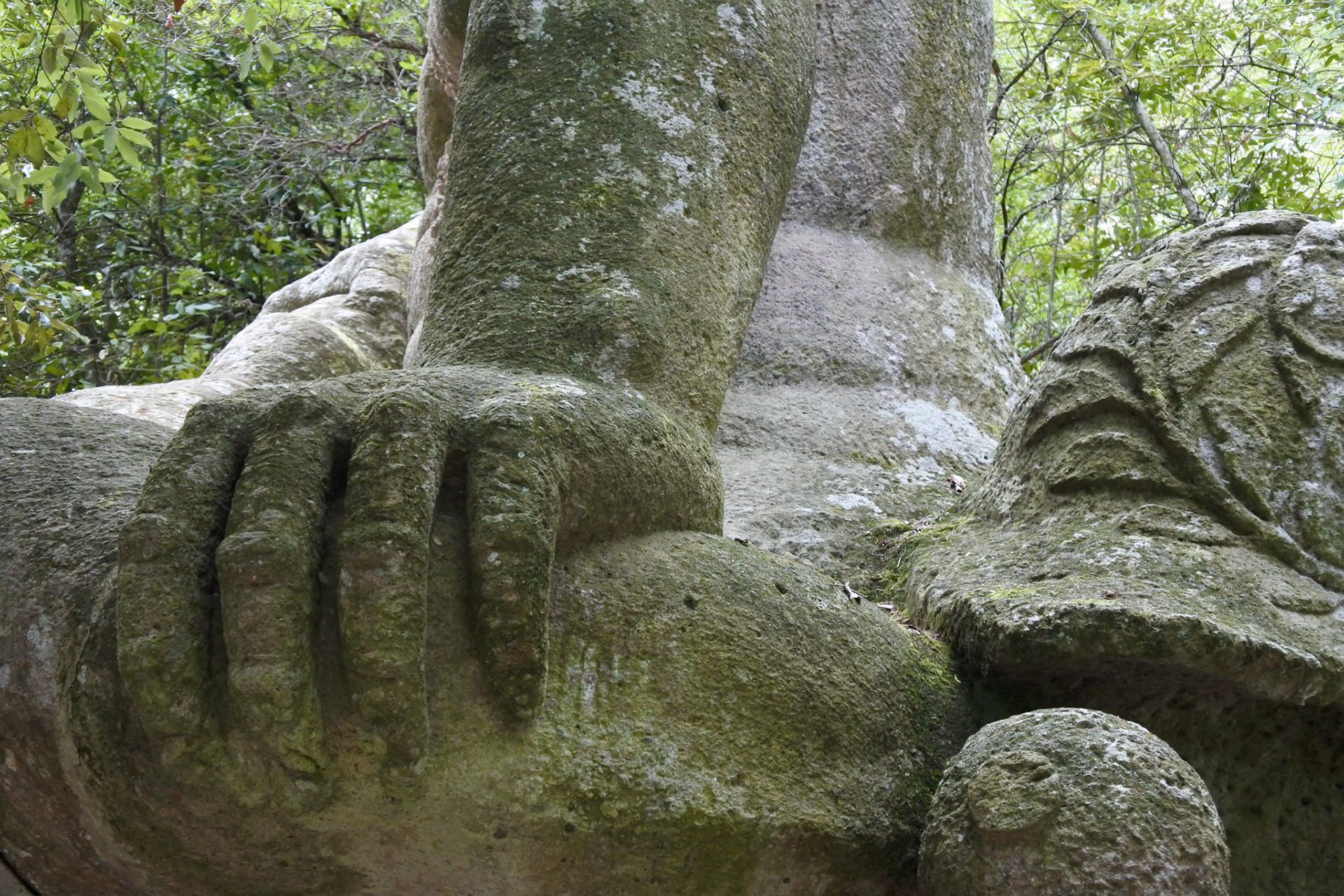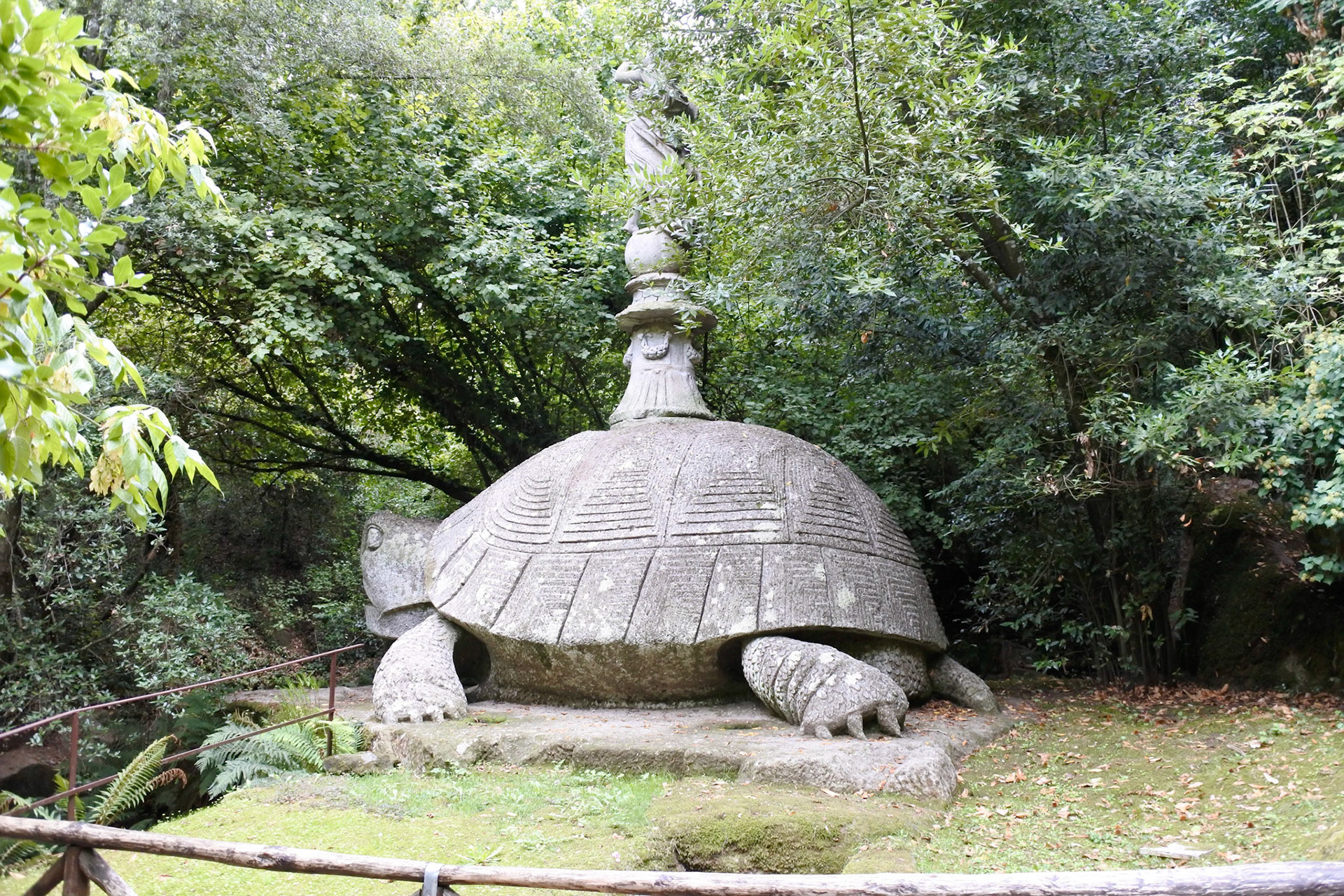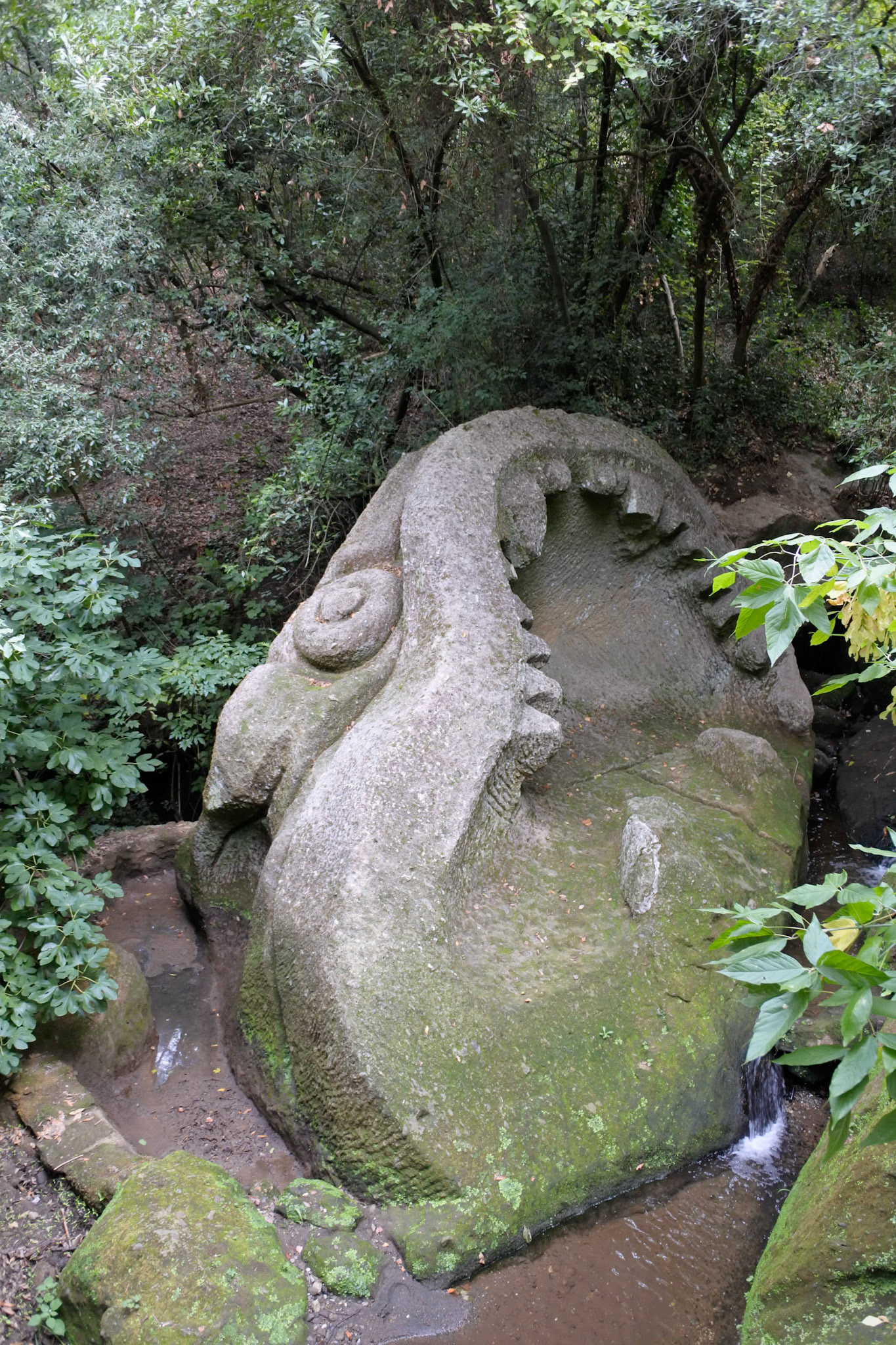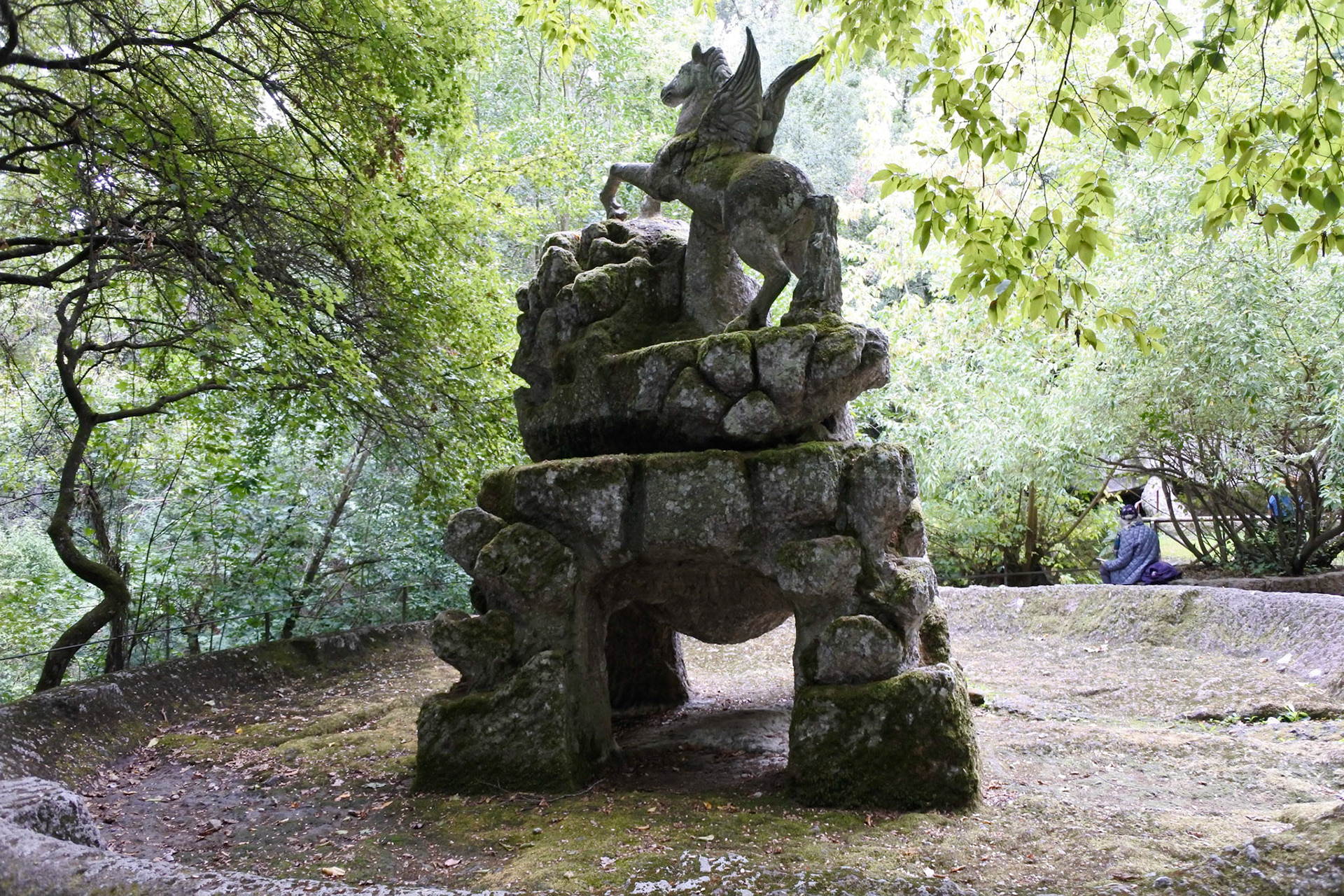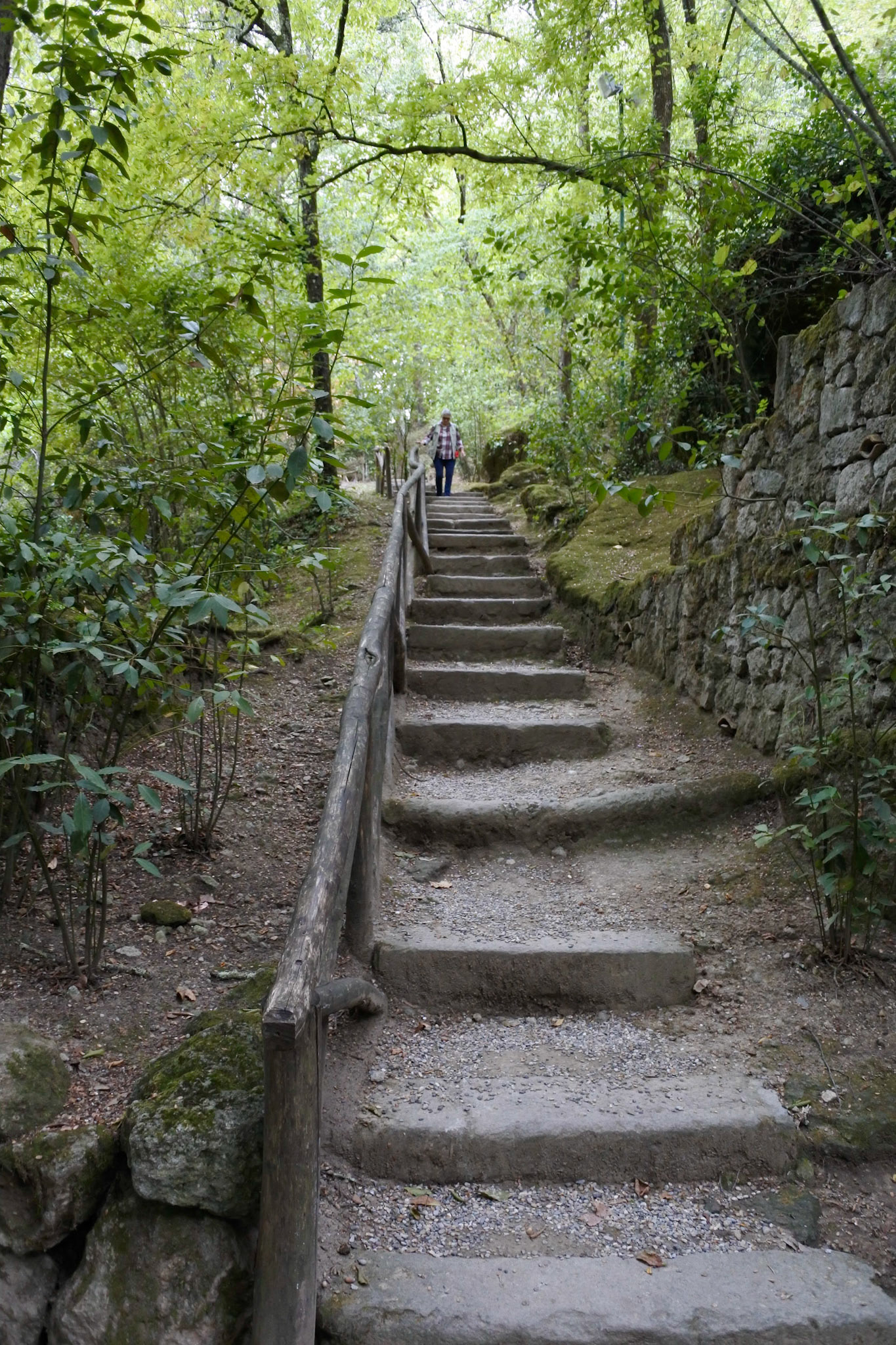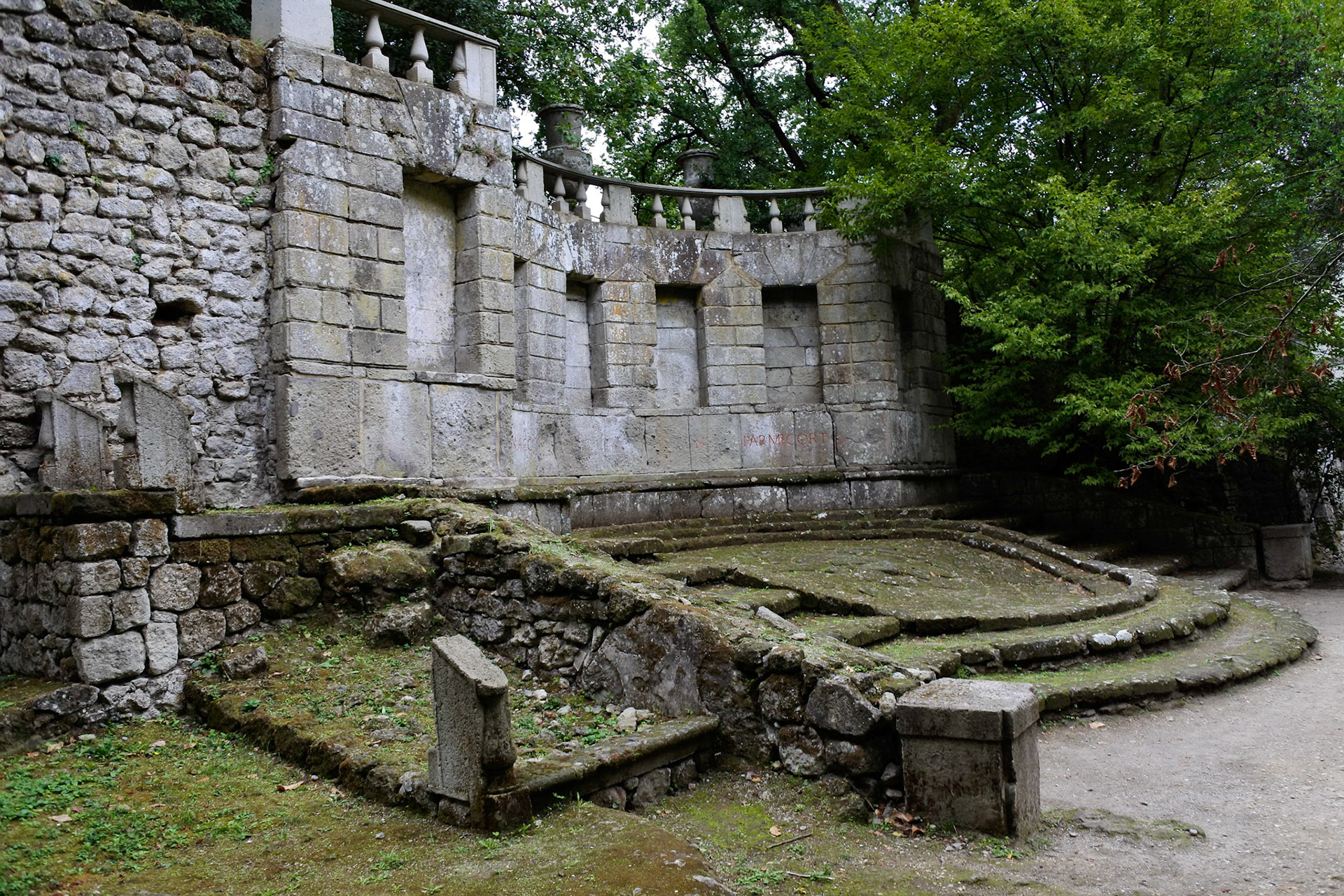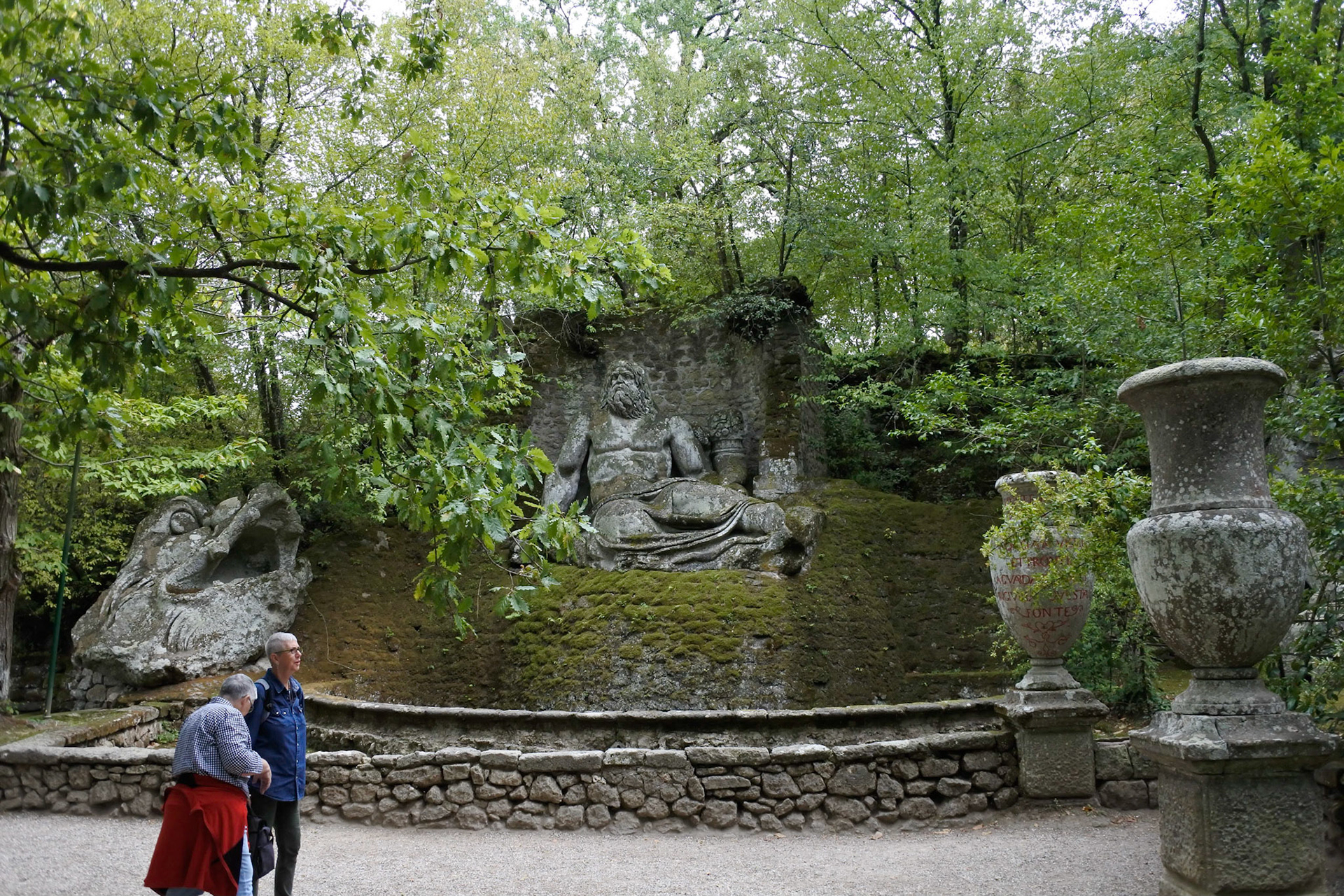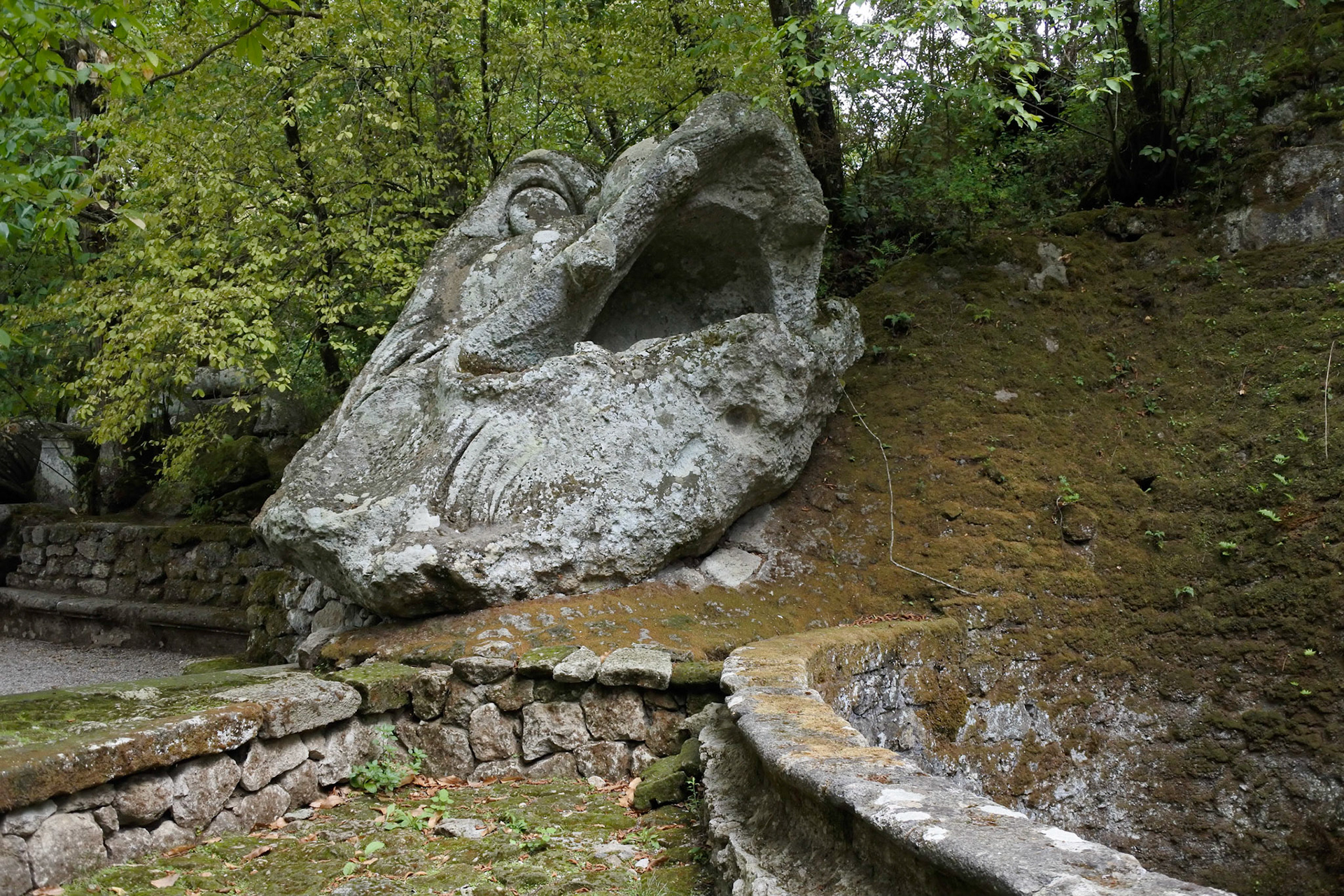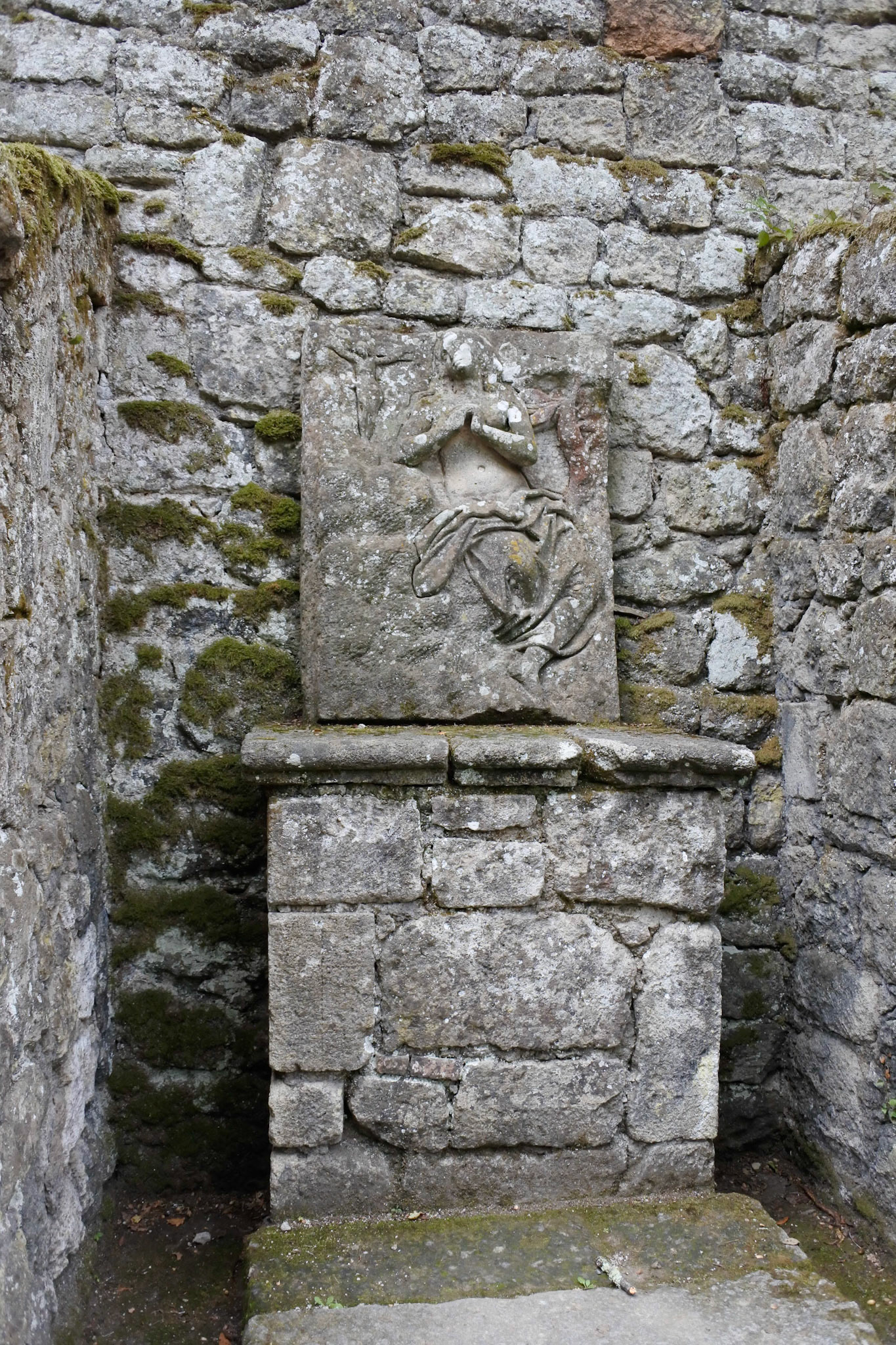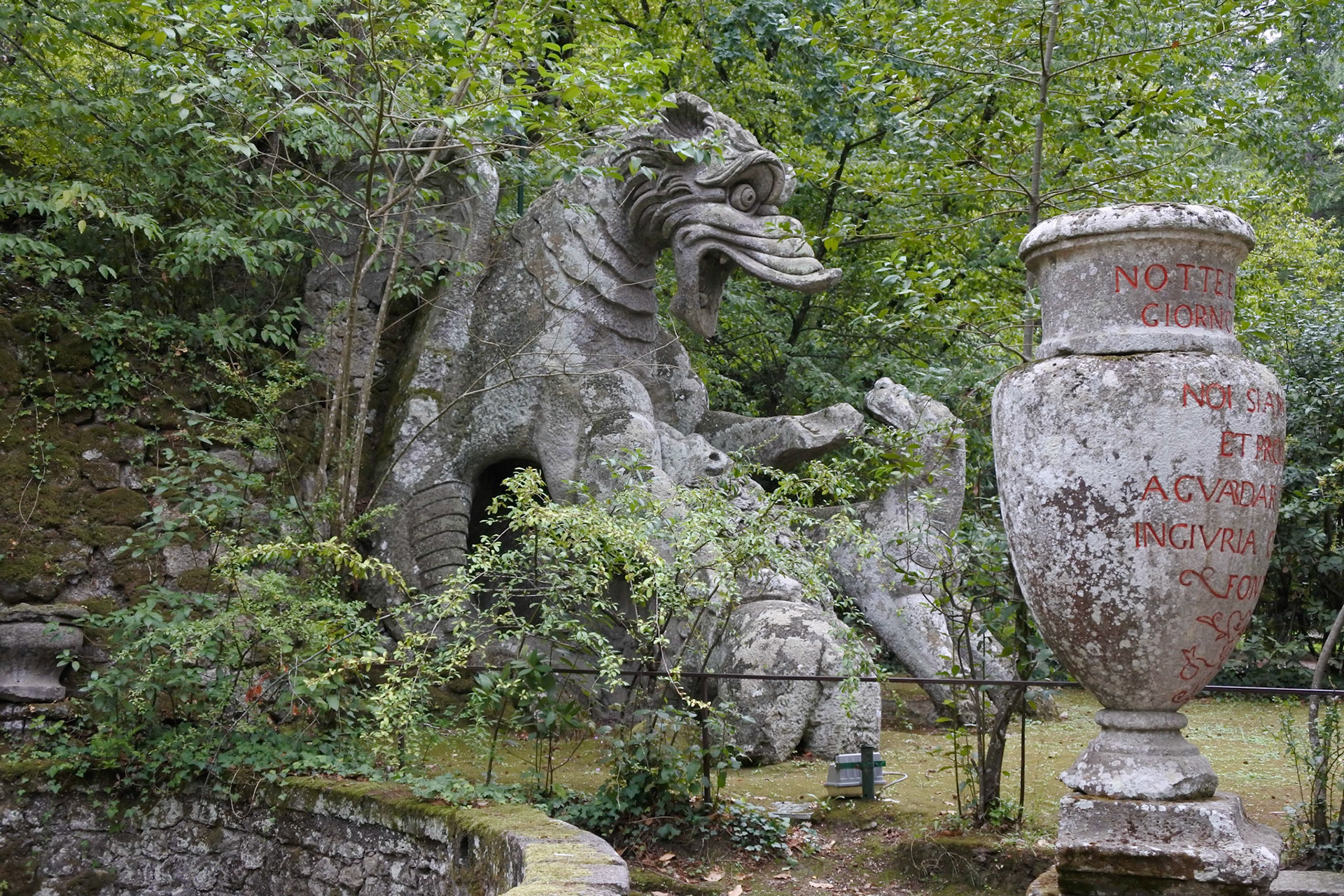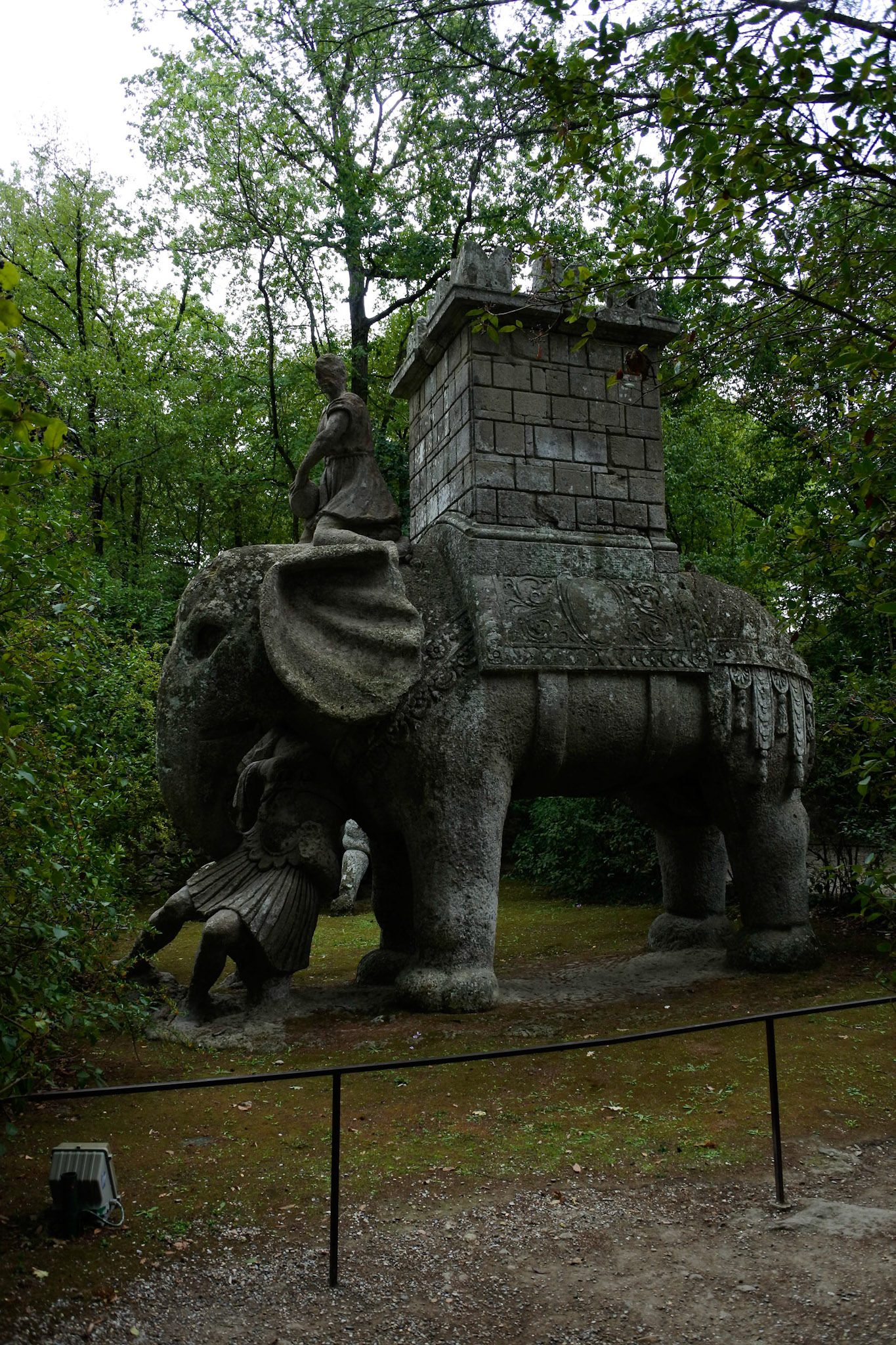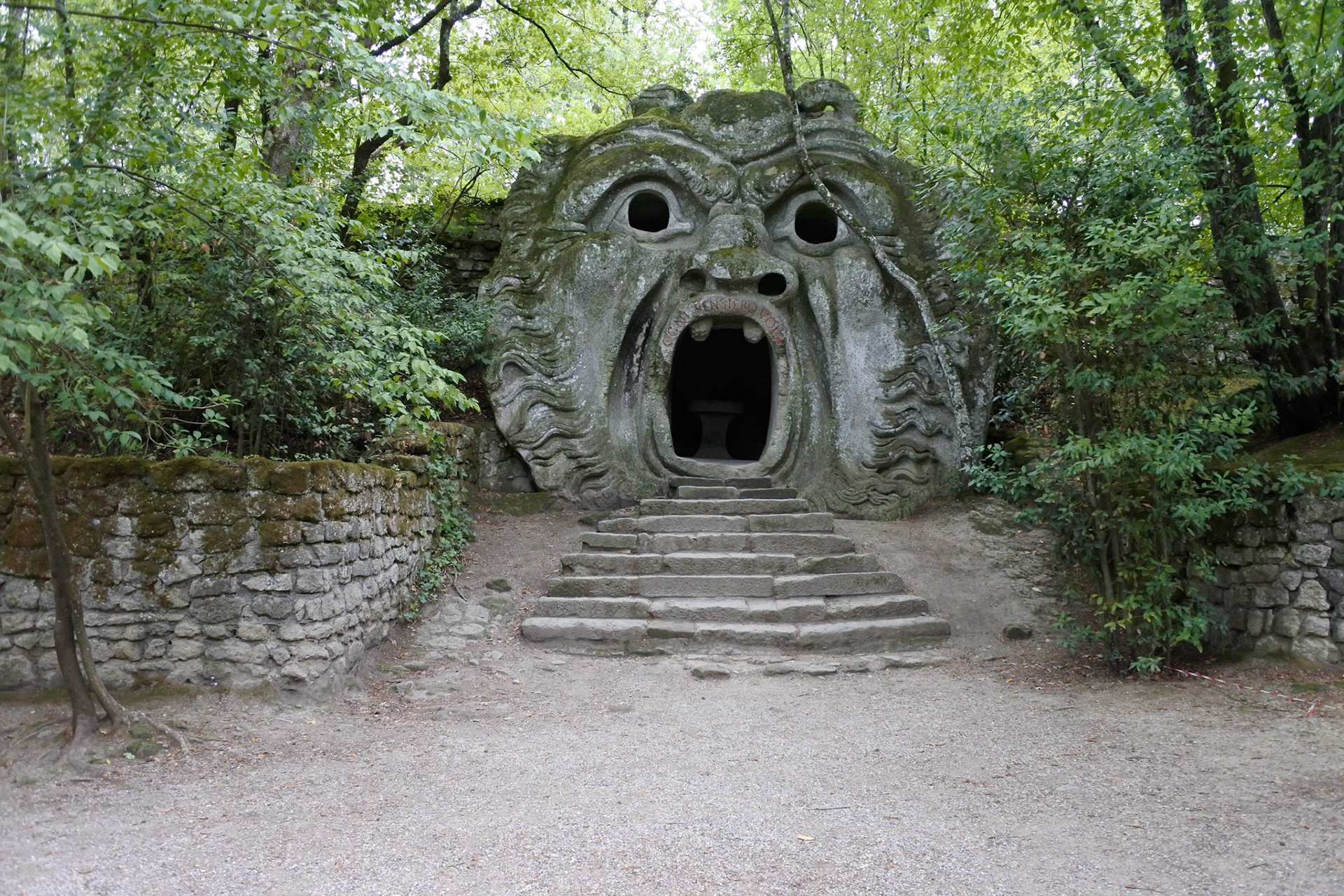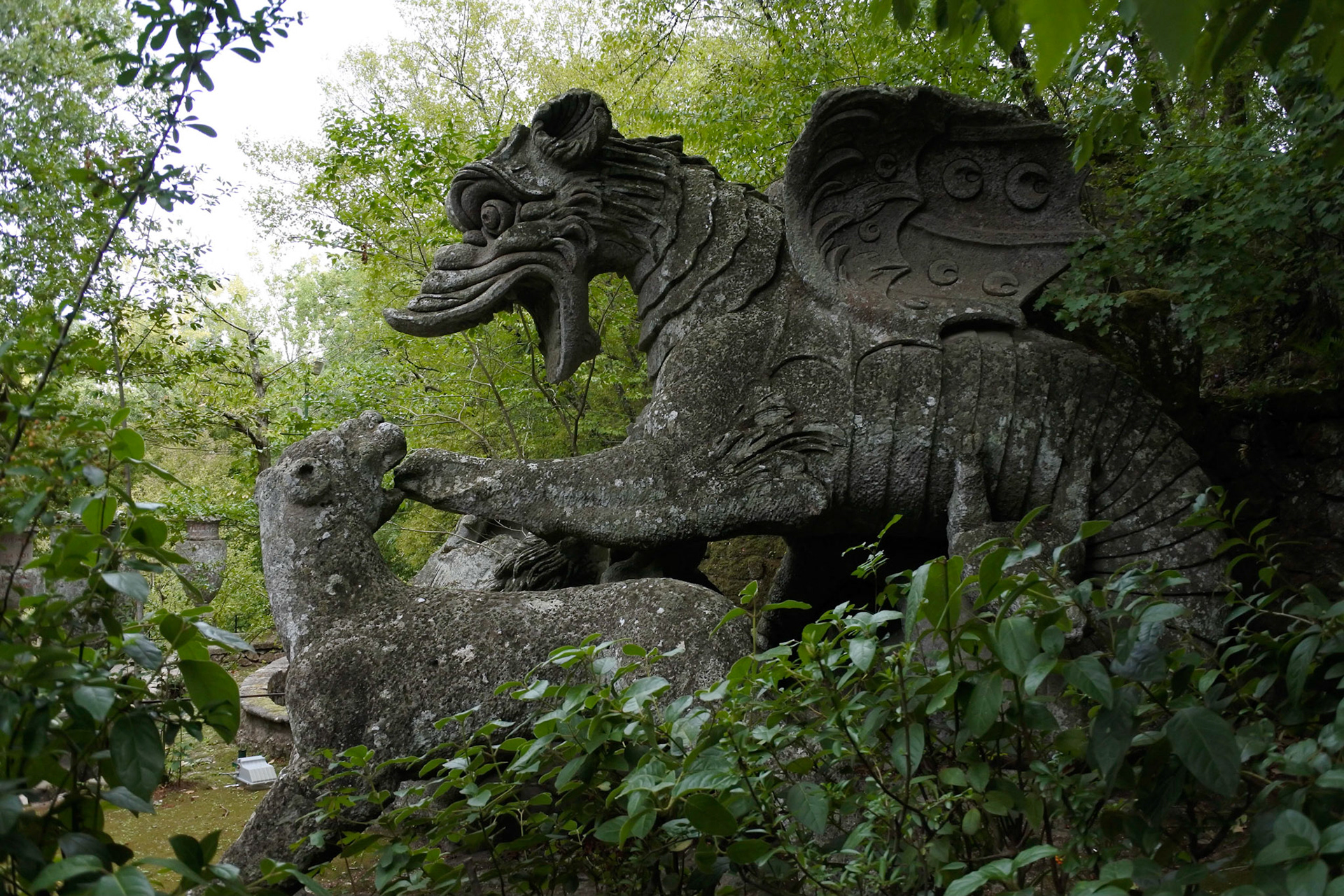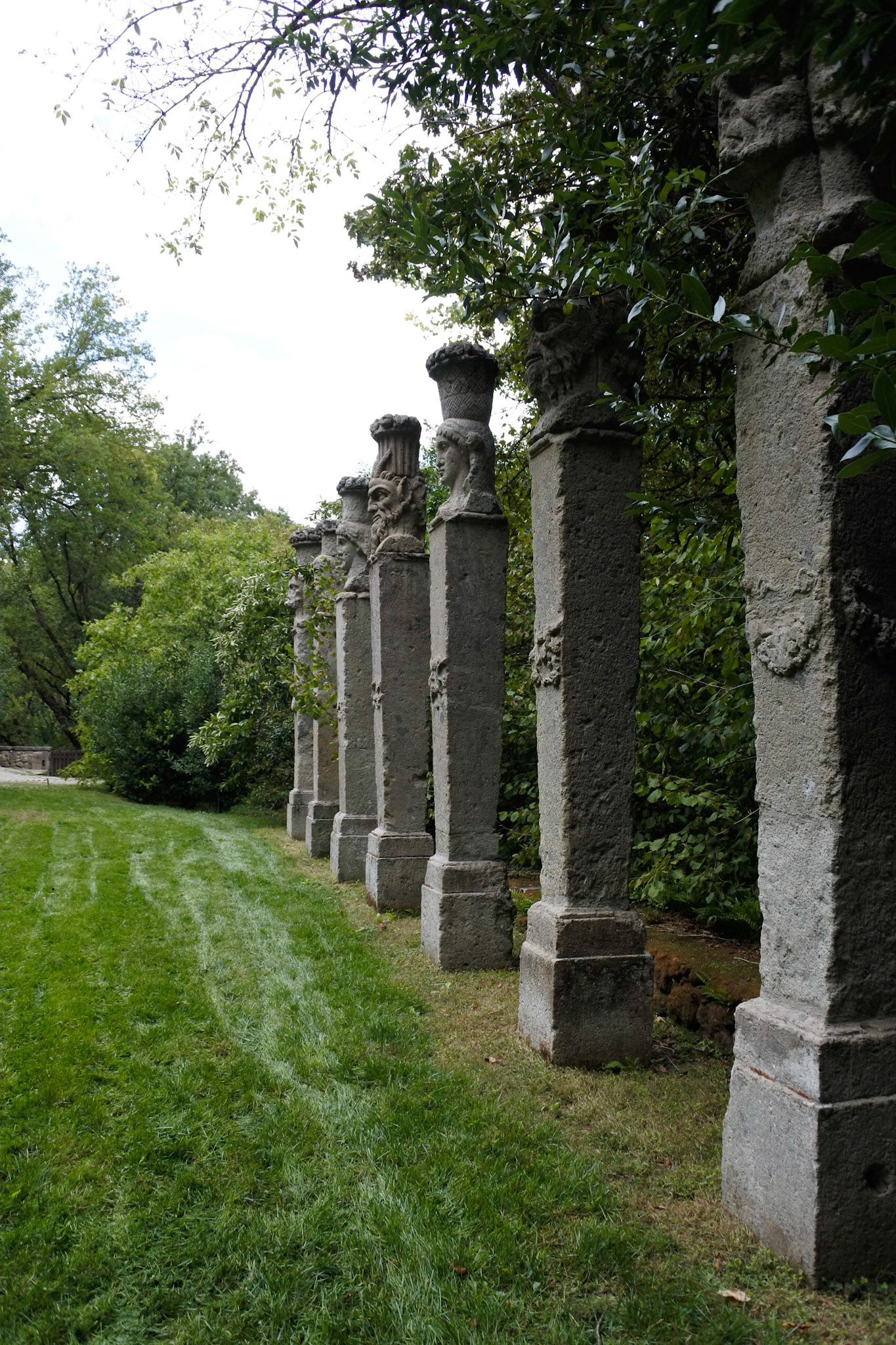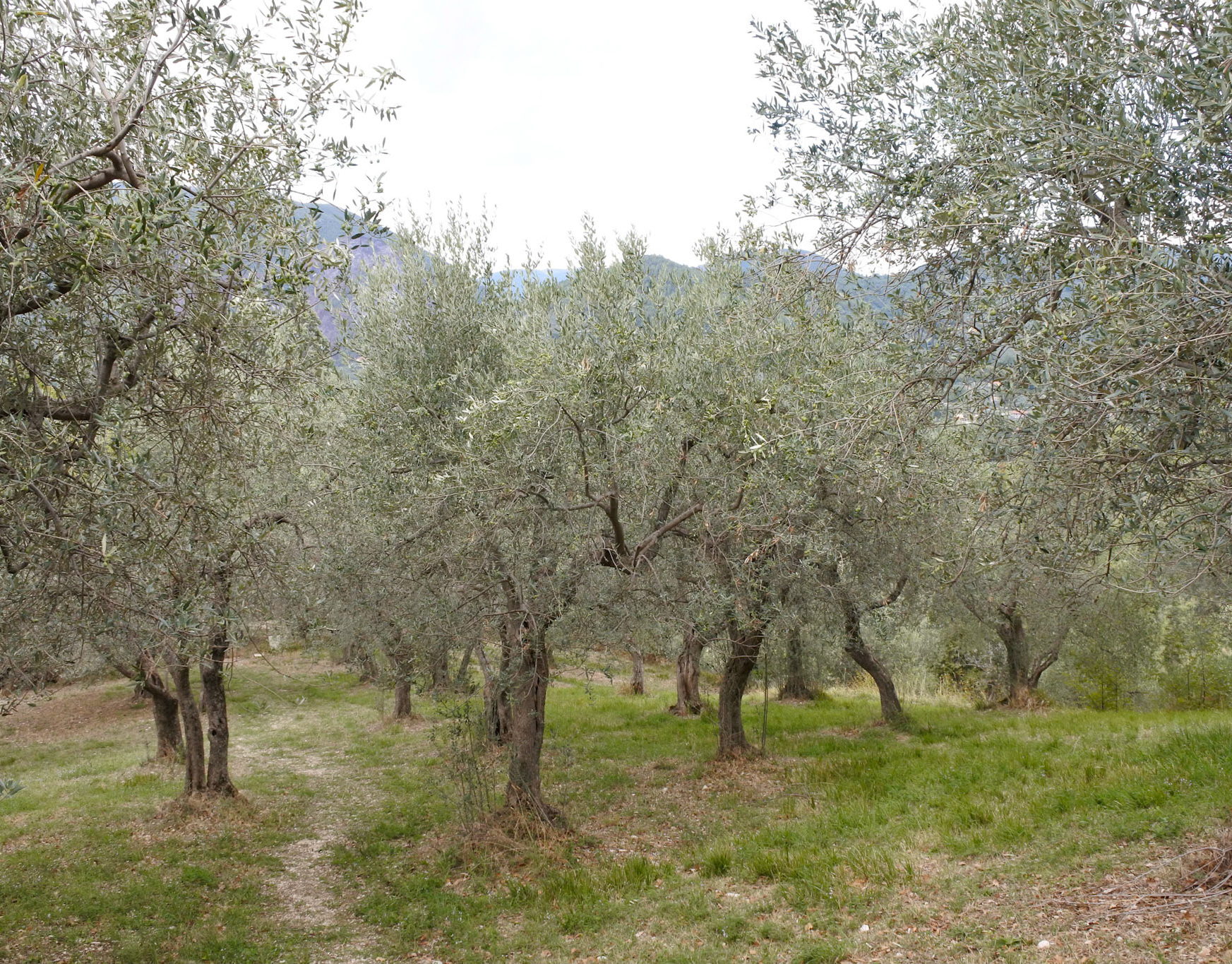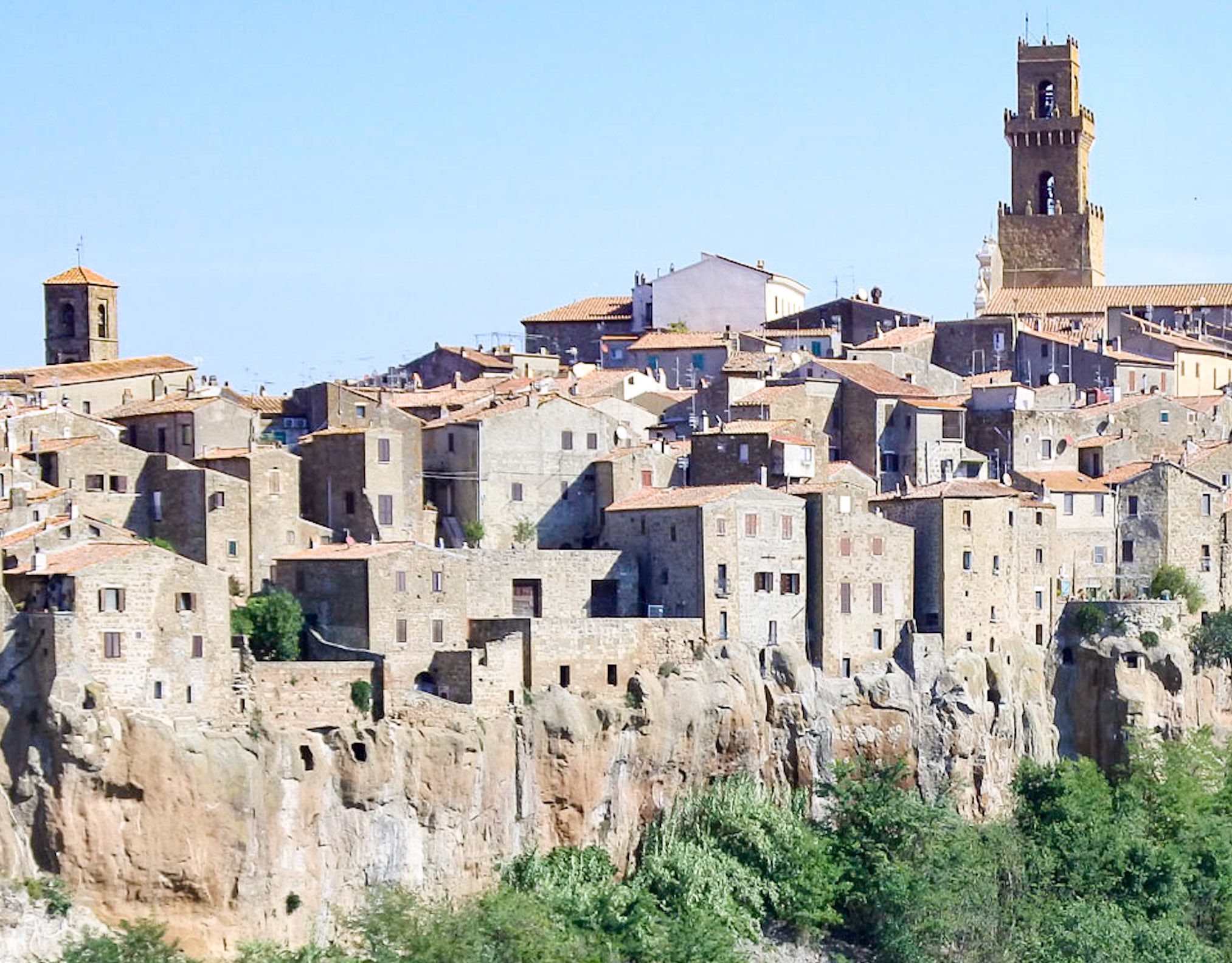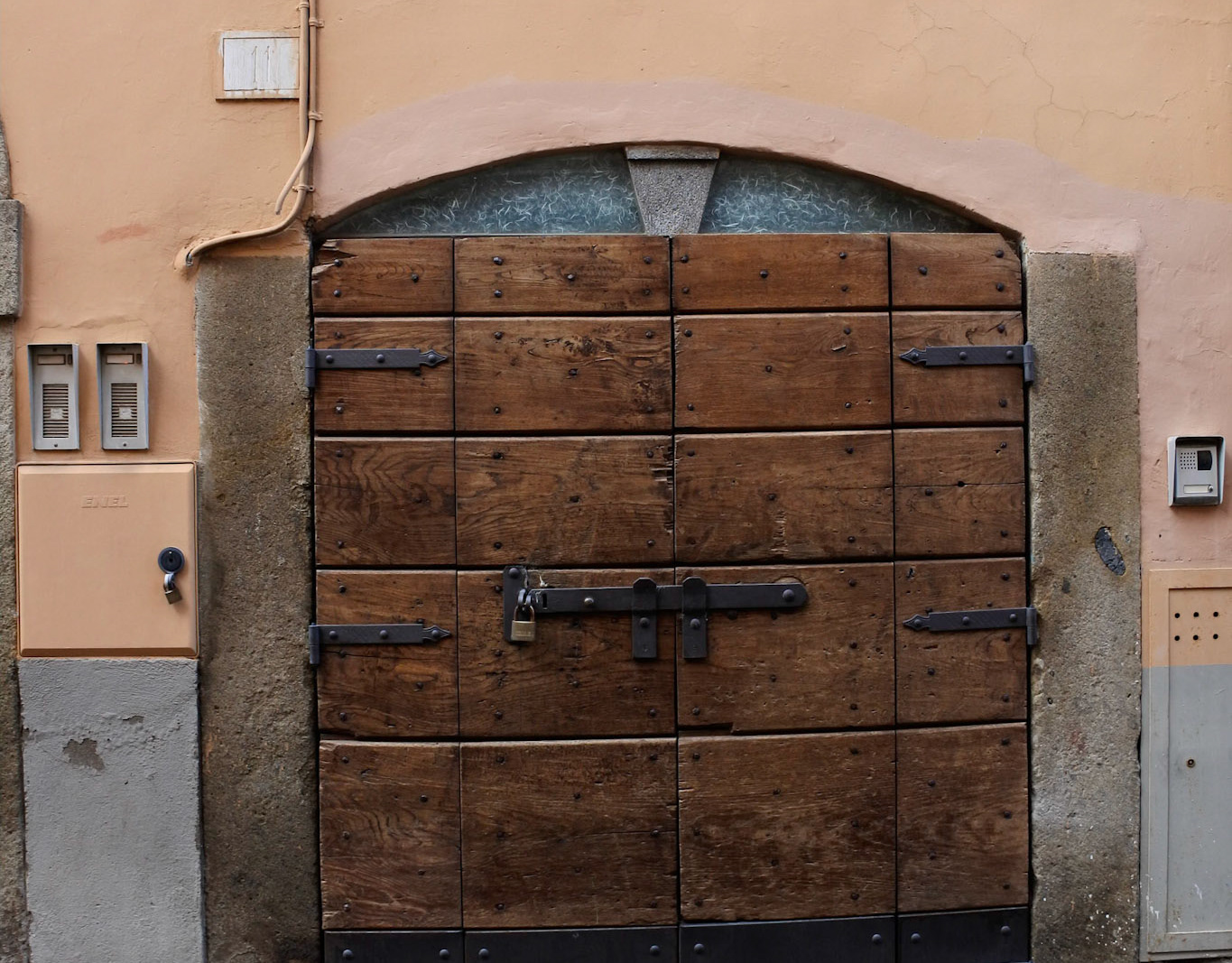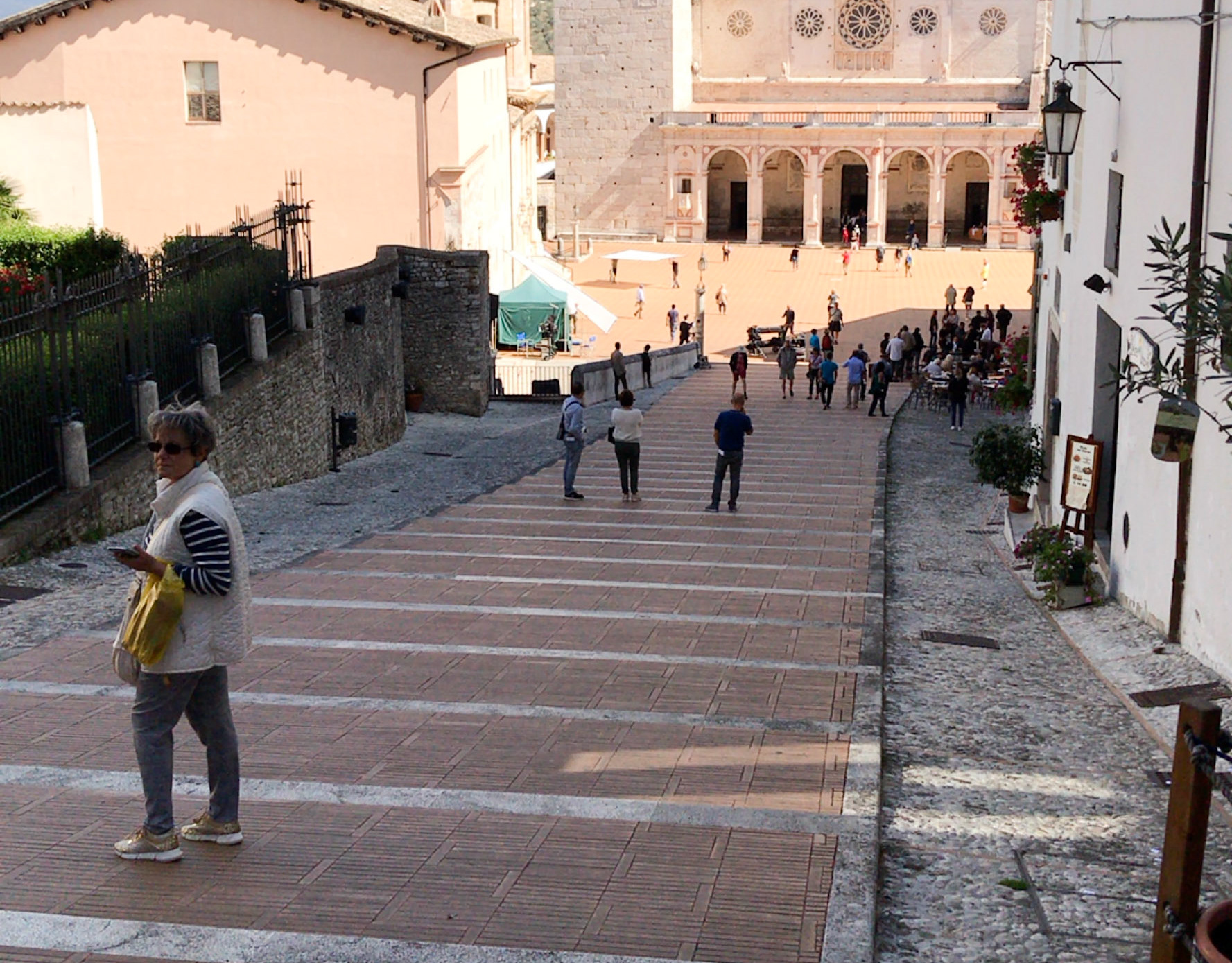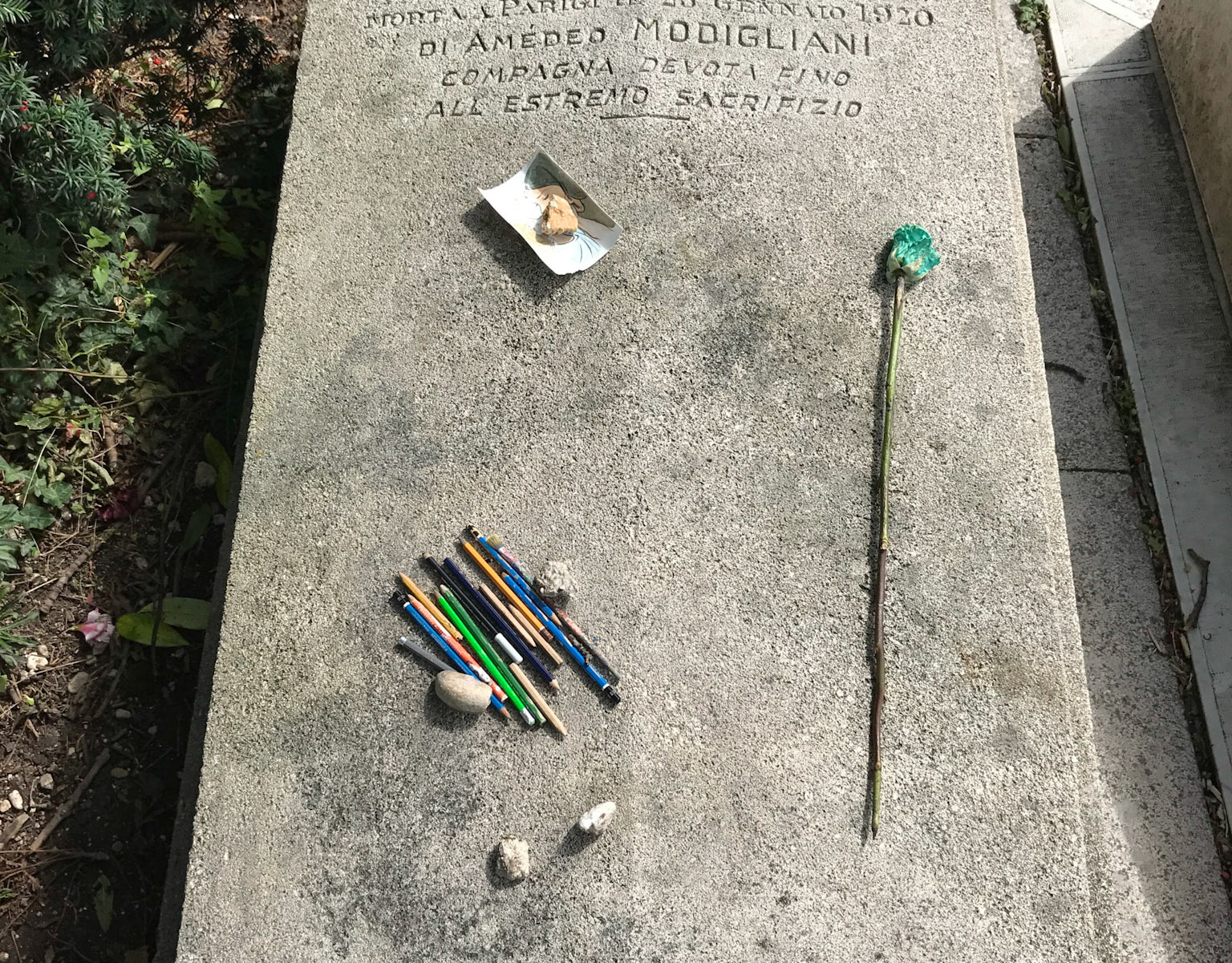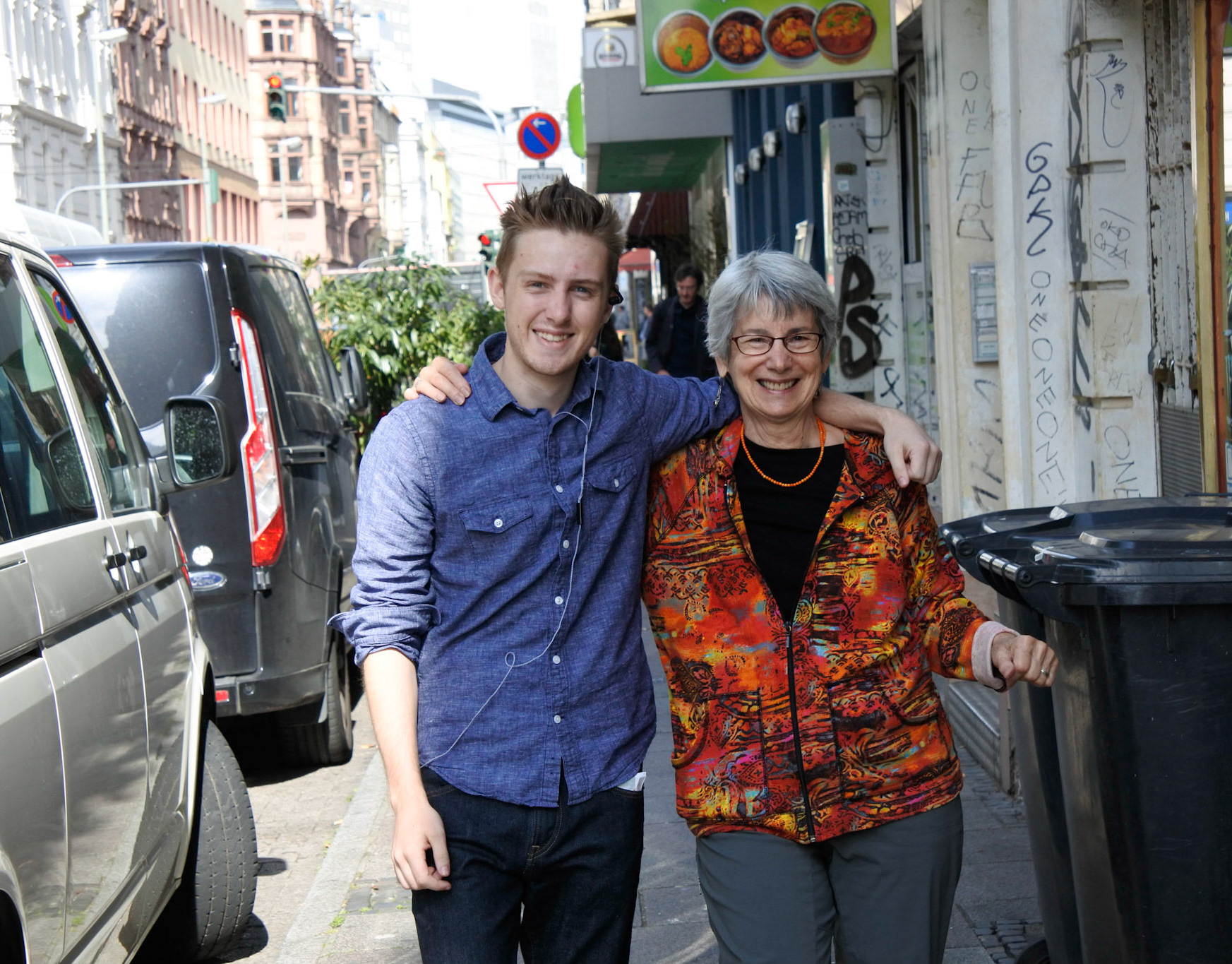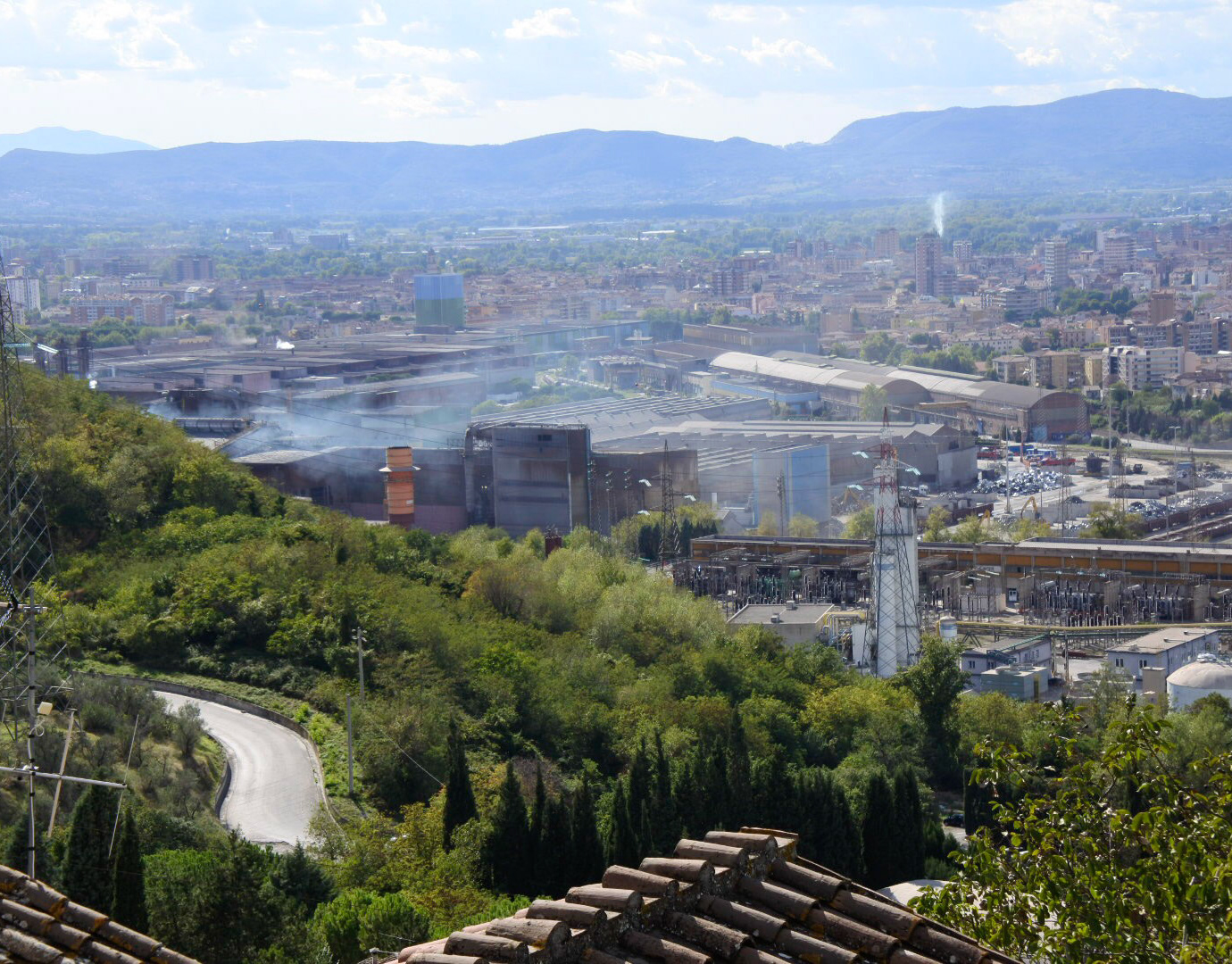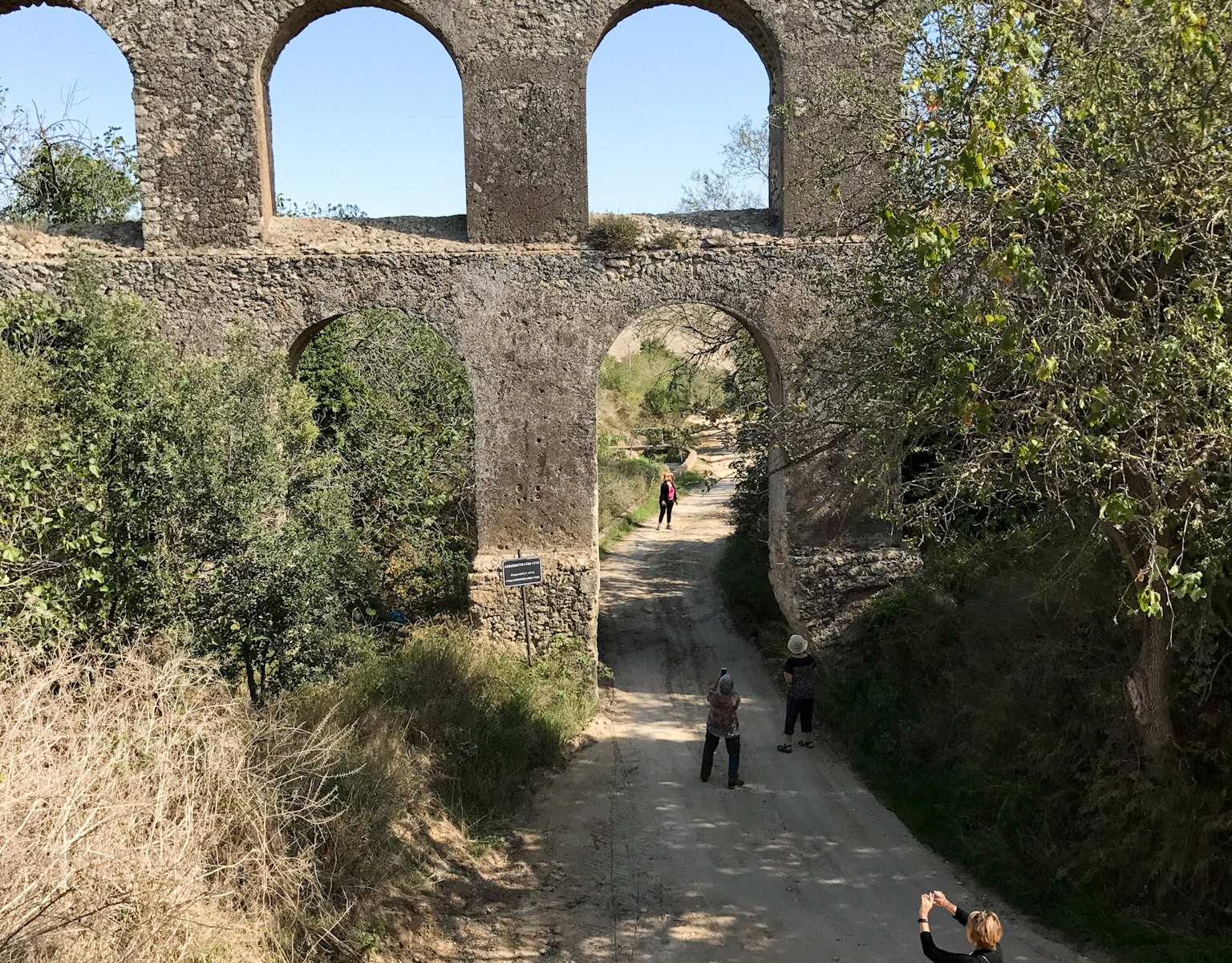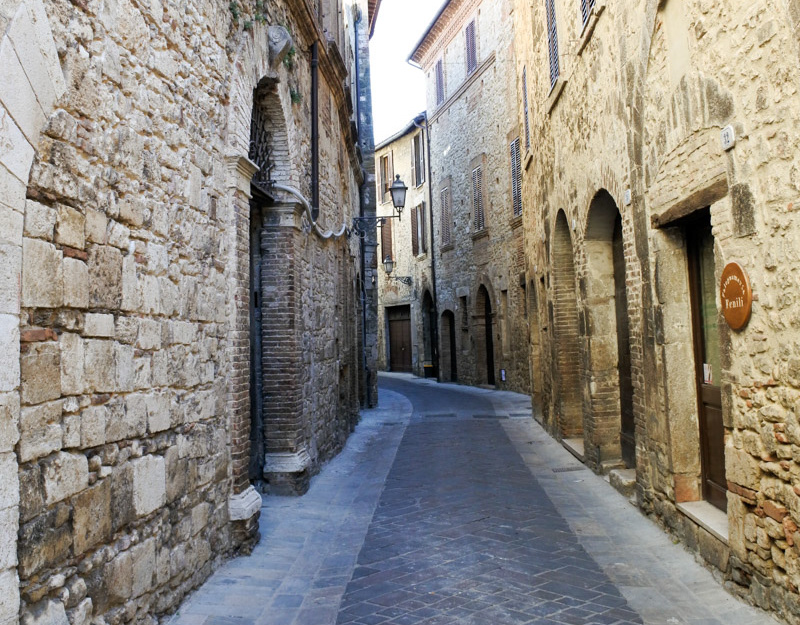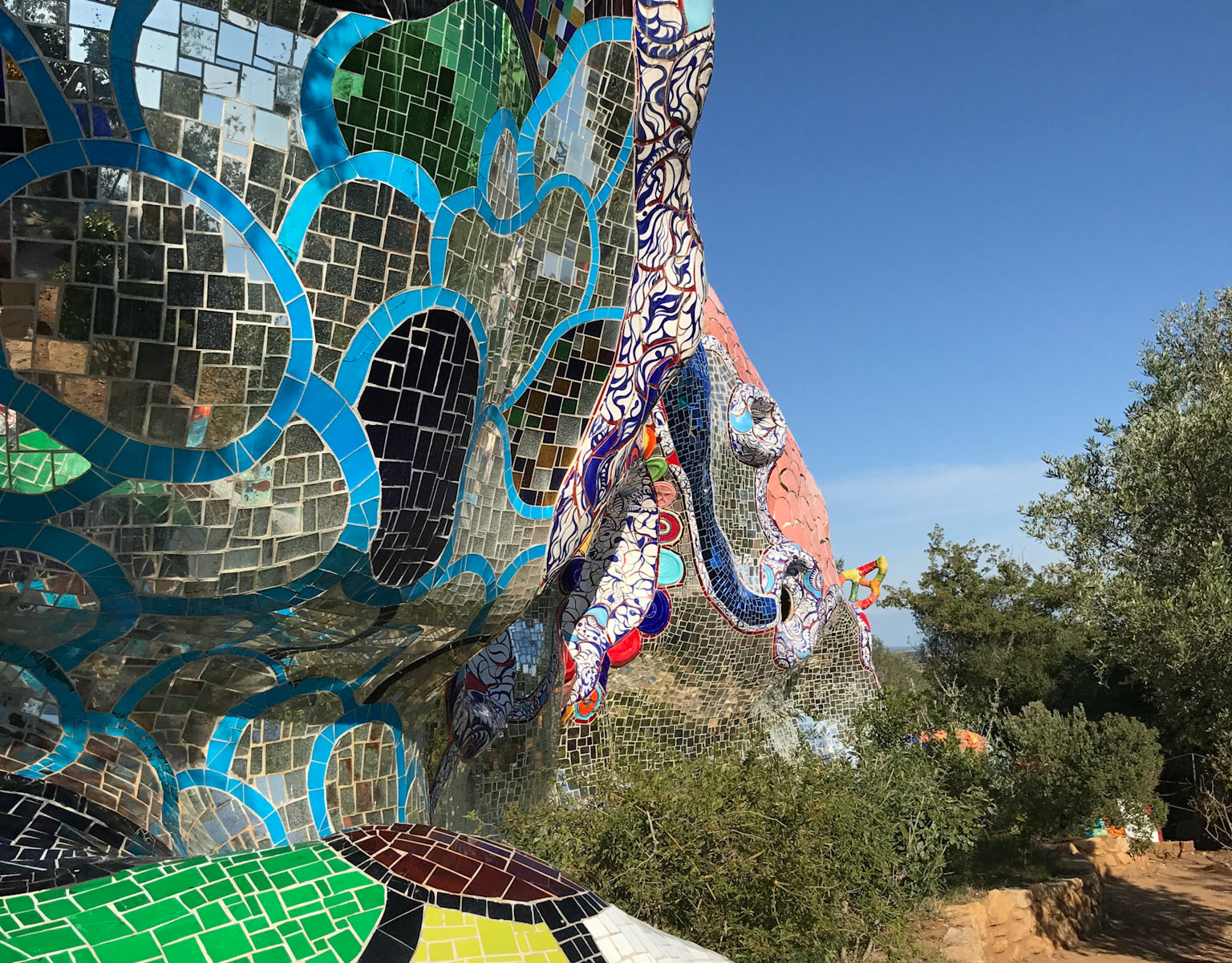Parco dei Mostri (Park of Monstors) is simply a stone-cold surprise. If I'd take the time to research it a little, it would still have been astonishing.
The location seems remote, but no less so than when it was designed and built. Wikipedia again: https://en.wikipedia.org/wiki/Gardens_of_Bomarzo.
It's noted that this is a Mannerist garden, as is the garden at Villa Lante. Wikipedia describes it: "Mannerism is a style in European art that emerged in the later years of the Italian High Renaissance around 1520, lasting until about 1580 in Italy, when the Baroque style began to replace it. Northern Mannerism continued into the early 17th century.
"Stylistically, Mannerism encompasses a variety of approaches influenced by, and reacting to, the harmonious ideals associated with artists such as Leonardo da Vinci, Raphael, and early Michelangelo. Where High Renaissance art emphasizes proportion, balance, and ideal beauty, Mannerism exaggerates such qualities, often resulting in compositions that are asymmetrical or unnaturally elegant. The style is notable for its intellectual sophistication as well as its artificial (as opposed to naturalistic) qualities. It favors compositional tension and instability rather than the balance and clarity of earlier Renaissance painting. Mannerism in literature and music is notable for its highly florid style and intellectual sophistication.
"The definition of Mannerism and the phases within it continue to be a subject of debate among art historians."
That's an interesting line to draw between Villa Lante and Parco dei Mostri. But you'll see.
More Wiki: "The park's name stems from the many larger-than-life sculptures, some sculpted in the bedrock, which populate this predominantly barren landscape. It is the work of Pier Francesco Orsini, called Vicino, a 16th-century condottiero, and patron of the arts, greatly devoted to his wife Giulia Farnese (not to be confused with her maternal grandmother Giulia Farnese, the mistress of Pope Alexander VI). When Orsini's wife died, he created the gardens to cope with his grief. The design is attributed to Pirro Ligorio, and the sculptures to Simone Moschino.
"During the 19th century, and deep into the 20th, the garden became overgrown and neglected, but after the Spanish painter Salvador Dalí made a short movie about the park, and completed a painting actually based on the park in the 1950s, the Bettini family implemented a restoration program which lasted throughout the 1970s, and today the garden, which remains private property, is a major tourist attraction."
One of the photos is of a fountain with a pool around it, but the pool pools and flows just like those clocks of Dali's. Part of his inspiration.
